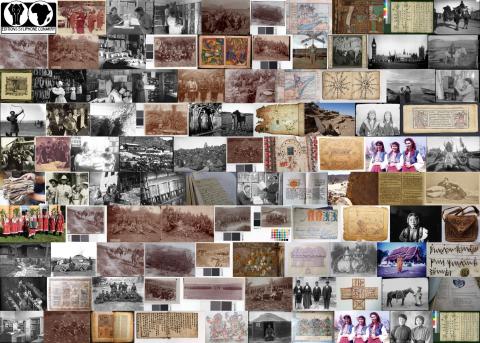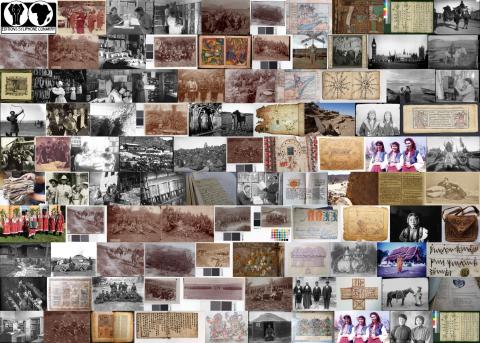
Aims and objectives
The Naghabhani Collection is the family collection of the late Tirtha Lal Naghabhani (Rajbhandari) (1930-2001). The Naghabhanis were the royal treasurers of the Kathmandu Malla court and the collection has materials dating back to the mid-17th century, a major portion belonging to Mansingh (fl. 1640s) and Navamisingh (fl.1690s). The latter's ninth descendant, historian Tirtha Lal Naghabhani (Rajbhandari), consolidated the value of the collection by adding more manuscripts, rubbings and copies of medieval inscriptions and family documents. The range of manuscripts and documents in the collection demonstrates how non‐academic sites are invaluable storehouses of knowledge preservation and generation.
The Naghabhani collection consists of around 2,000 leaves of manuscripts of different sizes, 50 Thyasaphus (lit. folded books), 5,000 folios of paper manuscripts, and three dozen palm‐leaf deeds. The contents of the collection include family chronicles of the Naghabhanis and other Malla aristocrats, personal writings of the past nine generations, sale deeds (17th ‐19th centuries), medieval texts on Saivatantra, astronomy, astrology, and secret rituals.
Since Tithalal Naghabhani himself specialised in medieval history and culture, his own field notes, diaries and article drafts also include images and rubbings of inscriptions, full texts or synopses from medieval documents. The originals of many of these have either disappeared from their locations, or are no longer accessible to historians. The significance of the collection lies in it being a 'live' archive which continues to provide a local, everyday, vernacular account of the medieval and modern Newar society. The collection has been visited and referred to by local and foreign curators, scholars and researchers alike, with research published based on the archive. The collection is a treasure trove of information on the socio‐cultural and economic information of pre‐industrial Nepal, from which historians, anthropologists and social scientists can draw to produce rich descriptions and analysis.
Currently, the collection is housed at Naghabhani's dilapidated family residence. The 16th century structure, if not safely dismantled, may collapse at anytime. The collection is bearing the brunt of poor storage conditions: the already time‐worn manuscripts are being attacked by mould; the dank and humid atmosphere caused by a leaky roof has drawn silverfish infestation; not to mention the threat from earthquakes to which Kathmandu Valley is so vulnerable. The caretakers are battling hard but it is obvious they are running against the time. Soon, it may not be possible to copy the collection. Urgent intervention is required to preserve it.
This project will scope, list, and classify the Naghabhani collection, digitise it according to EAP guidelines, and provide digital storage for use and dissemination through the host institution Madan Puraskar Pustakalaya (MPP) and Naghabhani family archive. The custodians have given consent for the works to be carried out on the collection including temporary relocation of the collection to MPP for digitisation.
Outcomes
Following has been achieved:
a. Listing of 721 items of documents that provide title, a brief description/summary of the document, date, and information on author, publisher, as available and applicable.
b. A total of 11,034 images that include some 13,000 folios of manuscripts and documents and some photographs and negatives (1,019 images). The collection includes medieval, pre-modern and papers generated by the late Tirhalal Naghabhani during his research. The date ranges from 1650 copperplate to 1742 family copy of edicts to 19th century government documents, personal loan deeds and correspondence, to papers generated by
Tirthalal during his career as historian. This is a unique collection that has medieval books, pre-modern documents and correspondence that not only traces the fortunes of an elite Newar family from Kathmandu from the medieval to present day, but also reflects the trajectory of the Nepali society in general. The collection has potential to feed decades of research.
The records copied by this project have been catalogued as:
- EAP760/1 The Tīrthalāl Naghabhanī Archive (TLA) (1125-2006)
Due to the cyber-attack on the British Library in October 2023, the archives and manuscripts database is currently inaccessible and we are unable to provide links to the catalogue records for this project.




